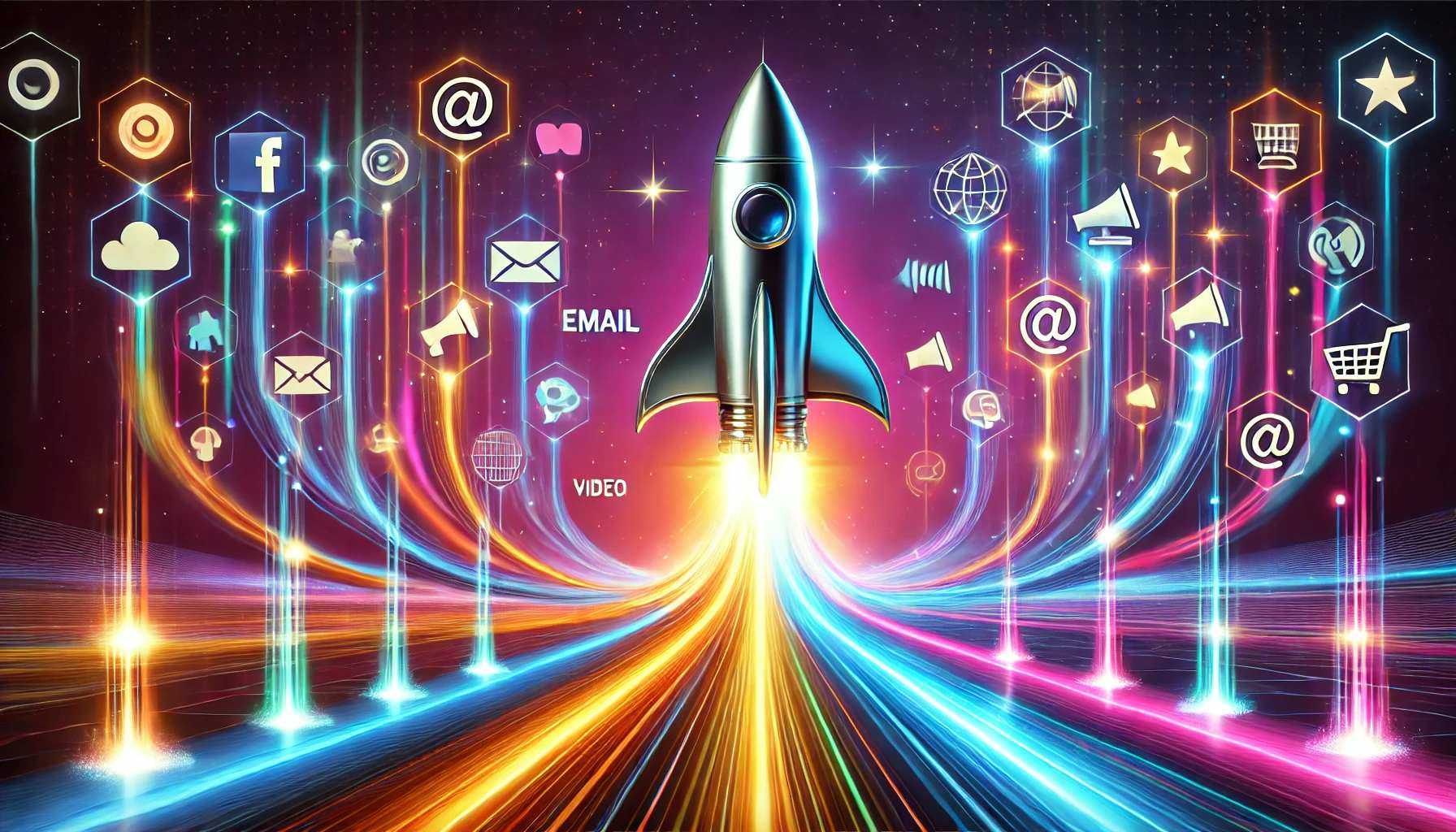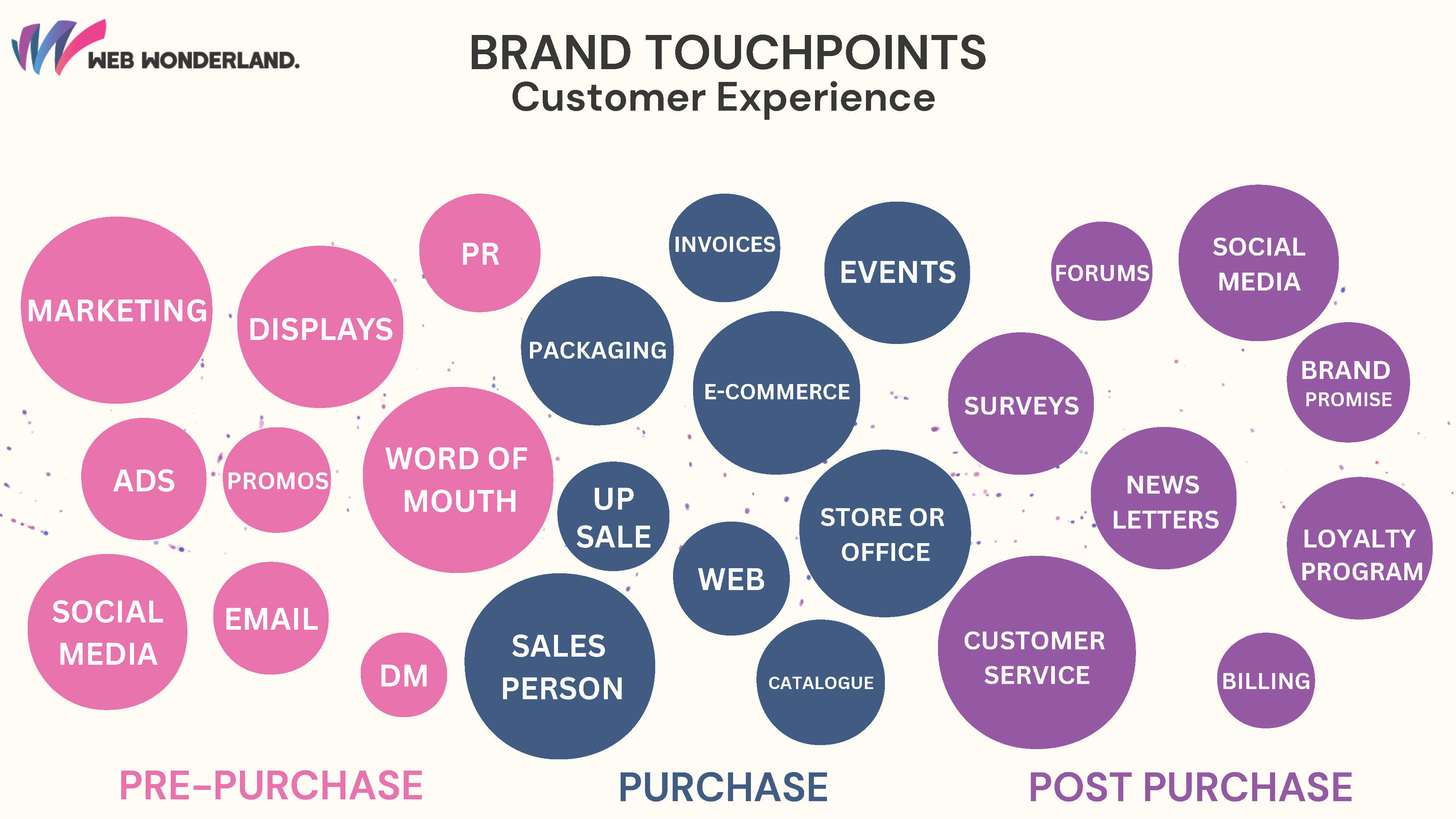Marketing Is More Than One Touchpoint — It’s the Whole Journey

When some businesses think about marketing, they tend to focus on a single channel.
It might be their website, a polished Instagram profile, or a well-crafted email campaign.
But here’s the reality: effective marketing is never about just one touchpoint.
It’s about the entire journey a customer takes, from first discovery, through decision-making, to post-purchase loyalty.
Each of these stages includes multiple interactions, and when they’re coordinated strategically, the impact compounds.
Why One Polished Channel Isn’t Enough
Imagine this:
A potential customer sees a brilliant ad on social media..
They click through but land on a website that feels outdated..
Later, they get a generic email that doesn’t reflect their needs..
Even if the ad was strong, the lack of alignment across touchpoints creates friction.
The result? Lost trust, lost leads, and lost sales.
Today’s customers expect a seamless, joined-up experience across every brand interaction.
The Three Phases of the Journey
Your marketing strategy needs to cover all three phases of the customer journey:
-
Pre-Purchase: Building Awareness & Interest
Ads, PR, social media, SEO, content, events.Here, the goal is attraction, sparking curiosity and building trust before the sale.
-
Purchase: Guiding the Decision
Website, sales team, promotions, packaging, e-commerce platforms.The goal is conversion, making it easy, clear, and compelling to buy.
-
Post-Purchase: Strengthening Loyalty
Customer service, billing, newsletters, loyalty programs, surveys.The goal is retention & advocacy — turning buyers into repeat customers and brand ambassadors.
Touchpoints Work Best Together
It’s not about doing everything at once. It’s about identifying the touchpoints that matter most to your audience, and ensuring they’re consistent, aligned, and working toward the same outcome.

For example:
Social ads drive traffic → but the landing page needs to deliver the same message.
A sales team closes the deal → but packaging, onboarding, and follow-up emails need to reinforce brand promise.
Customer service solves problems → but loyalty programs and newsletters ensure customers stay engaged.
When these touchpoints are integrated, each one amplifies the others.
A Holistic Strategy = A Better Funnel
Think of your marketing funnel not as a straight line, but as a web of interactions.
A browser might not convert the first time, but if they see aligned messaging across channels, their trust builds with each touch.
At Web Wonderland, we help brands map every interaction across the customer journey and create data-driven strategies that ensure consistency.
This isn’t just about reducing friction, it’s about making every touchpoint work harder.
Final Word
Marketing isn’t about a single polished channel.
It’s about a holistic, coordinated approach that understands the role of every touchpoint, from browser to buyer to brand advocate.
When every interaction works in harmony, the customer experience becomes seamless, and the business impact becomes measurable.
If you’d like help with your marketing strategy, or indeed individual channels get in touch today!
Frequently Asked Questions
How do I build a joined-up marketing journey?
Answer: Map your customer journey, select the highest-impact touchpoints per stage, align messaging and measurement, and connect data so teams see the same truth.
Which touchpoints matter most for B2B vs B2C?
Answer: B2B often prioritises website, sales enablement, LinkedIn, webinars, and email nurturing. B2C tends to emphasise social, paid media, product pages, checkout UX, and post-purchase communications.
How can I measure the impact across multiple touchpoints?
Answer: Use consistent UTMs, server-side tracking where appropriate, a shared analytics framework (e.g. GA4 plus a dashboard), and stage-based KPIs (awareness, consideration, conversion, retention).
What’s the quickest win if I can only fix one thing?
Answer: Align your highest-traffic acquisition message with the corresponding landing page — same promise, same language, same next step. Then fix the follow-up email to match.
